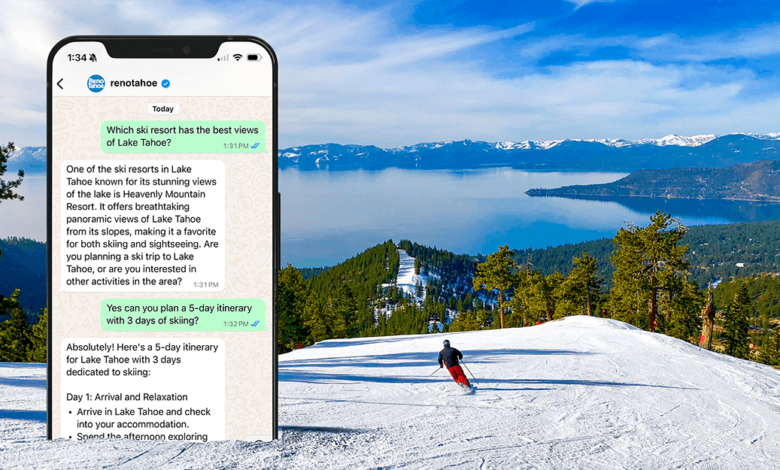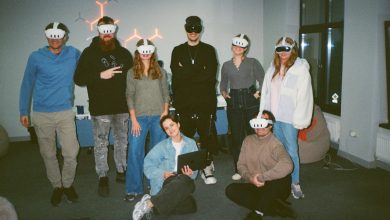
Travel is all about relating to new places: culture, people, food, landscapes. To varying degrees, this is true of a weekend trip to the country as well as an exhaustively planned adventure in Europe or Mexico. In the past, this relationship has mostly begun on touchdown, a sudden immersion in a whole new environment. It’s thrilling, but also sometimes overwhelming.
Imagine instead the immersion begins during the planning and preparation stages with help from travel AI tools leveraging conversational artificial intelligence. These sophisticated chat platforms are growing in popularity because they’re tailored specifically for tourism boards — aka destination marketing organizations (DMOs) — and all the local experiences in the destination. They have revolutionized the travel-planning journey from a passive, information-gathering exercise into a richly interactive dialogue.
With destination-specific AI tools, visitors don’t have to dive into a whole research process. They can get quick answers to the most random and specific questions immediately via AI-powered chat on a DMO’s website or social media channels including WhatsApp, Instagram and Facebook Messenger.
A prospective visitor might engage in a series of exchanges with the AI-powered RenoTahoe Guide throughout their day. “Is there vegan Chinese food in Reno?” “Is there gaming near the ski resorts?” “Do any of the resorts have live music?” “Do any have jazz?” Instead of sifting through information, they’re having a conversation.
That iterative conversation that evolves based on the spontaneous whims of the visitors is key to AI. It’s called “chat” for a reason.
A customized chat platform built for a DMO can answer almost any question about the destination immediately. And that first answer is just the beginning of the conversation. The more the visitor asks follow-up questions and converses with the AI, the more it refines and personalizes its results.
The human feedback loop to build better travel AI
In addition to helping travelers connect with a destination and plan a trip, the travel industry is a great use case for reinforcement learning by human feedback — in which the AI learns from the user. If the AI gives inaccurate information — mistaking the Washington Monument in Baltimore for the Washington Monument in D.C., for example — and a user naturally tells the AI that it’s wrong, the AI is able to learn from the error. This feedback loop becomes even more powerful with the addition of human monitors who are empowered to flag issues for backend fixes.
Personalized data is something that DMOs generally lack and a major part of the appeal for them to engage with AI. Conversational AI (chat) engages visitors throughout the entire funnel — including in-destination. About a quarter of people using AI travel tools are in-destination, providing DMOs with the ability to support visitors in real time.
The utility of AI in tourism is hardly limited to user experiences. The data it can provide DMOs is incredibly useful, allowing for new ways to model and predict traveler behavior once they’ve reached a destination. My team and I have talked to dozens of travel CEOs over the past year, and something we heard over and over was a desire for richer data.
“We need data that provides material value for our partners,” one tourism CEO told us. “That’s our mandate. How are our visitors spending money and where? How are they behaving and traveling through our area? How can we help people find our partners in a more personalized way?”
These types of questions are common worldwide. DMOs need to understand their visitors better to continually improve how they engage with them.
“It has been eye opening to see what users are asking when they start messaging with Pythia,” says Panos Kokkalis, digital products manager of Marketing Greece about his destination’s AI tool. “The fact that you can message back and forth with the AI like a person in over 50 languages helps us see how visitors phrase questions and what’s on their mind. It has already led to key takeaways that have shaped our content and marketing strategies.”
Organizations such as Destination Canada and Germany Travel are making substantial investments in data infrastructure to fundamentally reimagine their tourism offerings. They’re also able to leverage their data to rank higher in AI search and provide value to partners. Using AI to learn more about who is interested in their destination and why is the bridge to this new data future for DMOs.
Compliance and legal issues with travel AI
Some DMOs who are new to using AI have expressed concern about potentially showing favoritism for particular businesses in the destination. This is an issue that older chatbots, before the recent advances in AI, would run into. They operated with limited, predetermined response sets. But modern chat platforms are extremely personalized. The AI generates a different response for each user based on their question and the overall flow of the conversation.
Occasionally, local data privacy regulations in some geographies can present challenges as well. But generally, travel brands that are keen on AI will have experience navigating these regulations already and can draw, at least to some extent, on past experience.
The future of travel AI
It’s only a matter of time until we all start changing our search habits on any website or social channel. We’ll evolve from navigating menus and static search bars, and engaging in endless scrolling, to chatting directly with the platform. This isn’t a new idea. It was the thinking behind Apple launching Siri in 2011, except it didn’t work very well. Now with generative AI, or more precisely, conversational AI, the next generation of travel AI tools work amazingly well when coupled with a DMO’s deep knowledge base.
As AI models expand their context windows and enhance memory capabilities to retain more visitor-specific information, we approach a future where destinations “know” individual visitors on a much deeper level.
And yes, you can still find the answers to travel questions on Google, but it’s much slower and it isn’t enjoyable. There’s no flow to it. It feels like work. But using AI in this way feels expansive. It feels creative. Your relationship with the destination is growing and unfolding before you even touch down.





